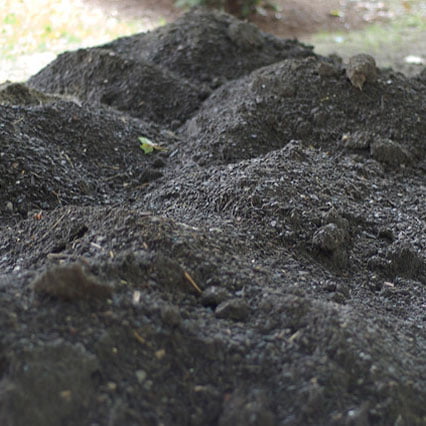Screened Topsoil
& Screened vs Unscreened
The Differences between Topsoil Screened and Unscreened
At face value, the major benefit and difference of screened topsoil over unscreened topsoil is that the material will be easier to apply and handle since the screening process will remove the chunks, sticks and stones to the size of screen used to screen.
Another benefit is that the soil consistency is more uniform. During the screening process most of the materials will be blended and mixed better during the process. The process will provide the user with a product that can be amended uniformly if desired with products like lime, fertilizer, compost, seed and expect uniform results.
When consumers commonly think of screened topsoil in our local market in Anchorage Alaska, they are more than likely referring to screened peat moss with added sandy loam. This product is more of a modified topsoil that is blended as well.
We at American landscaping run our blended topsoil material through a 3/8” – 7/16” screen for lawn grade product. This product is referred to as lawn topsoil or “A” grade topsoil. This soil meets or exceeds our local municipal specifications for topsoil for the following, by weight or volume:
Organic content
Silt Content
Sand/gravel content and size gradation
Ph level

Class “B” Soil
Class “B” soil is generally the same as the aforementioned. This product is intended to be used in a larger volume or erosion control and also in deeper planting beds that will then be covered with various mulches like our hemlock bark mulch or rock mulch. We run class “B” through a larger screen to increase production time and lower the cost of the product, making it more affordable in large volumes. The product will still meet the municipal spec for organics, silt, sand/gravel, and Ph. The sieve size will not be met for lawn-grade soil. State/DOT specifications are much more liberal and almost any soil sieved through a 3” screen will meet the specifications.
We manufacture other soil blends targeted to specific markets. One of our top sellers is our garden blend. We combine 40% topsoil blend, 30% compost, and 30% aged bark mulch.

We use compost that we make locally at our facility, with green waste we collect from our selves and other local landscape and tree professionals. We are very careful to watch the incoming material for undesirable or foreign material. We have narrowed our list of acceptable products and clients that will bring a quality, cleaner green waste for us to compost.

The aged bark we use is 100% aged hemlock. We also sell this product as stand alone in bagged or bulk form. The aged hemlock mulch is a byproduct of a pulp mill. We have been utilizing the bark mulch from this pulp mill for over 30 years. The product is uniform and consistent with what you will find in a bag at any and all large retailers throughout North American. The aging process of the bark negates the nitrogen robbing qualities of fresh wood chips. Fresh wood chips blended with topsoil or compost would make it a less desirable growing environment.
American Landscaping proudly diverts over 65 MILLION POUNDS (32,500 tons) ANNUALLY from landfills and disposal sites in its manufacturing of topsoil, compost and bark mulch products.
